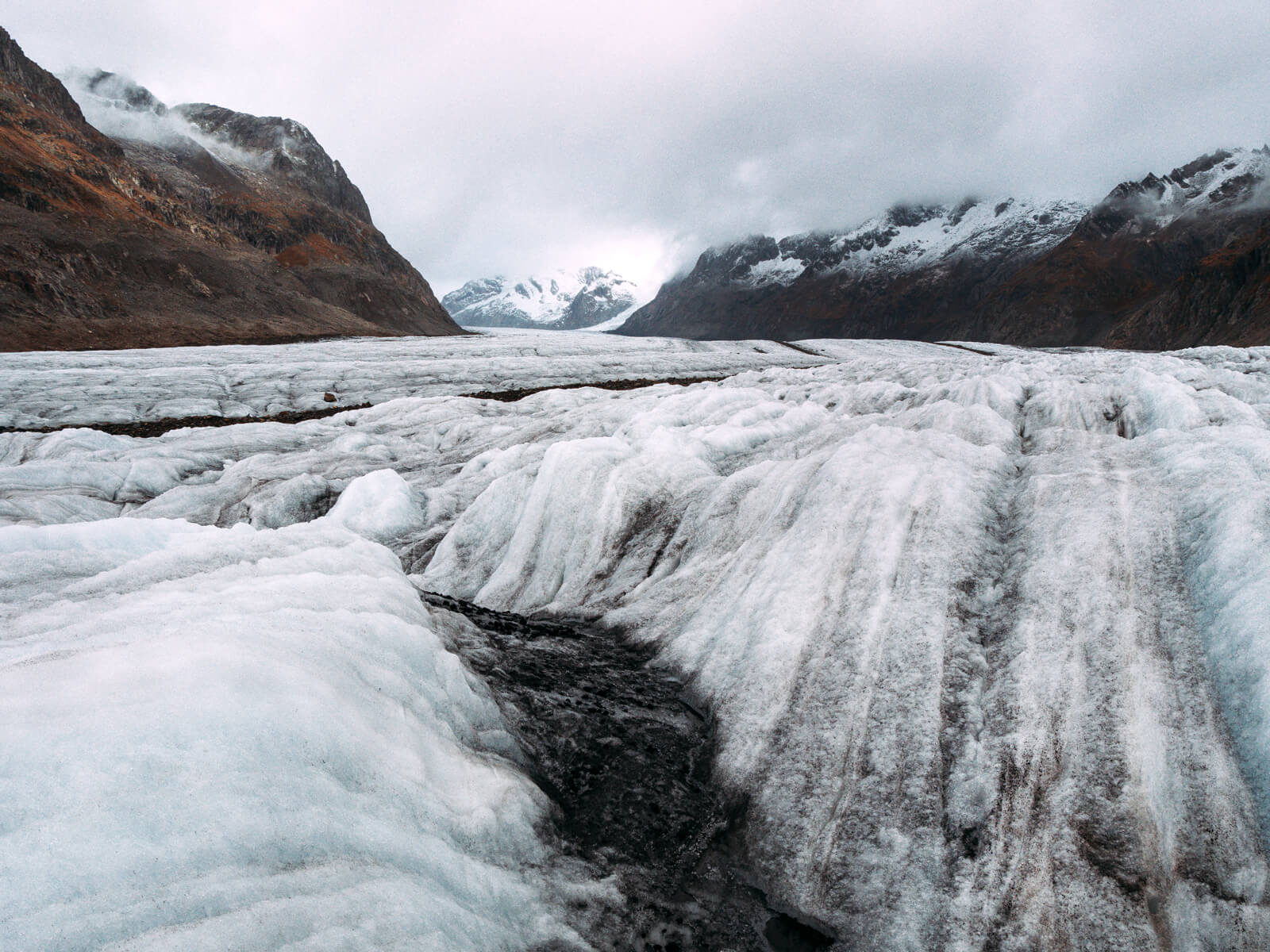
Last summer, it cost 1400 Swiss francs a week to buy additional feed for a herd of 27 cows in Canton Aargau.
What’s the reason for having to buy extra hay and grains? The lack of rain.
Drought and high heat were felt throughout Switzerland, not only in the flatlands. The situation was precarious in the mountains, where farmers normally bring their livestock to feed on rich alpine vegetation throughout the summer.
The heat and lack of water forced farmers to remove their animals from the Alps in August. Many went straight to the slaughterhouse instead of returning to the barn. According to the Swiss Farmer's Association, those numbers increased by 3.7% for calves, 4.2% for cattle, and 10.2% for goats over last year.
Due to the lack of rain, there was insufficient grass to feed these animals, and farmers were already depleting their winter rations.
Glaciers on the run
This is not a story about cattle or the plight of Swiss farmers. It's a story that seeks to answer the "why" behind the why. I want to tell you a story about glaciers. Since moving back to Switzerland, I've been fascinated with the eternal ice. In fact, glaciers have accompanied my trail-running escapades in the Alps.
The Jungfrau Marathon used to lead to the Kleine Scheidegg, but today, it goes to the Eigergletscher. This classic race takes runners along a moraine with glaciers clinging onto the Jungfrau, Eiger, and Mönch above. The ice has receded significantly from its previous location.
The Zermatt Marathon follows the Gornergletscher, which appears to be shrinking yearly.
The Bettmeralp Half Marathon, like the Swiss Alps 100, runs alongside the mighty Aletsch Glacier and offers stunning views of the Fieschergletscher.
Finally, thanks to the Bernina Ultraks Glacier Marathon, I got the opportunity to race across two glaciers, the Morteratsch and Pers, in the Engadin.
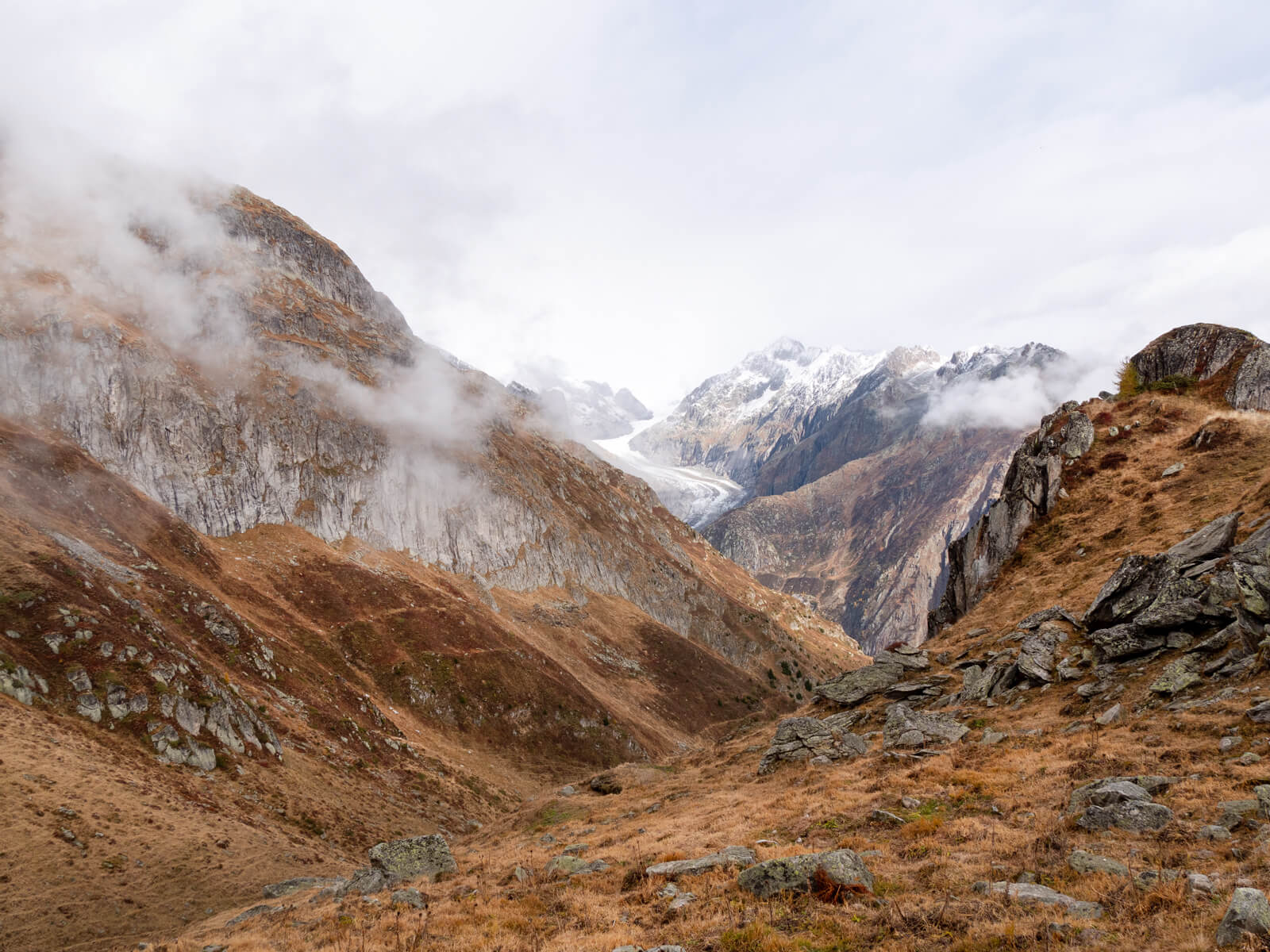
The melting of glaciers in Switzerland
Even my "home mountain," the Säntis, has a glacier. Blau Schnee (Blue Snow) will soon be but a footnote in the annals of human-caused climate change. Since 1850, we have lost no less than 750 glaciers in Switzerland.
The Pizol Glacier was the most recent permanent loss in 2019. Many glaciers, you would assume, are minor and prone to disappear.
They are, however, decreasing at an alarming rate. Switzerland has lost more than half of its volume of glacial ice since 1931.
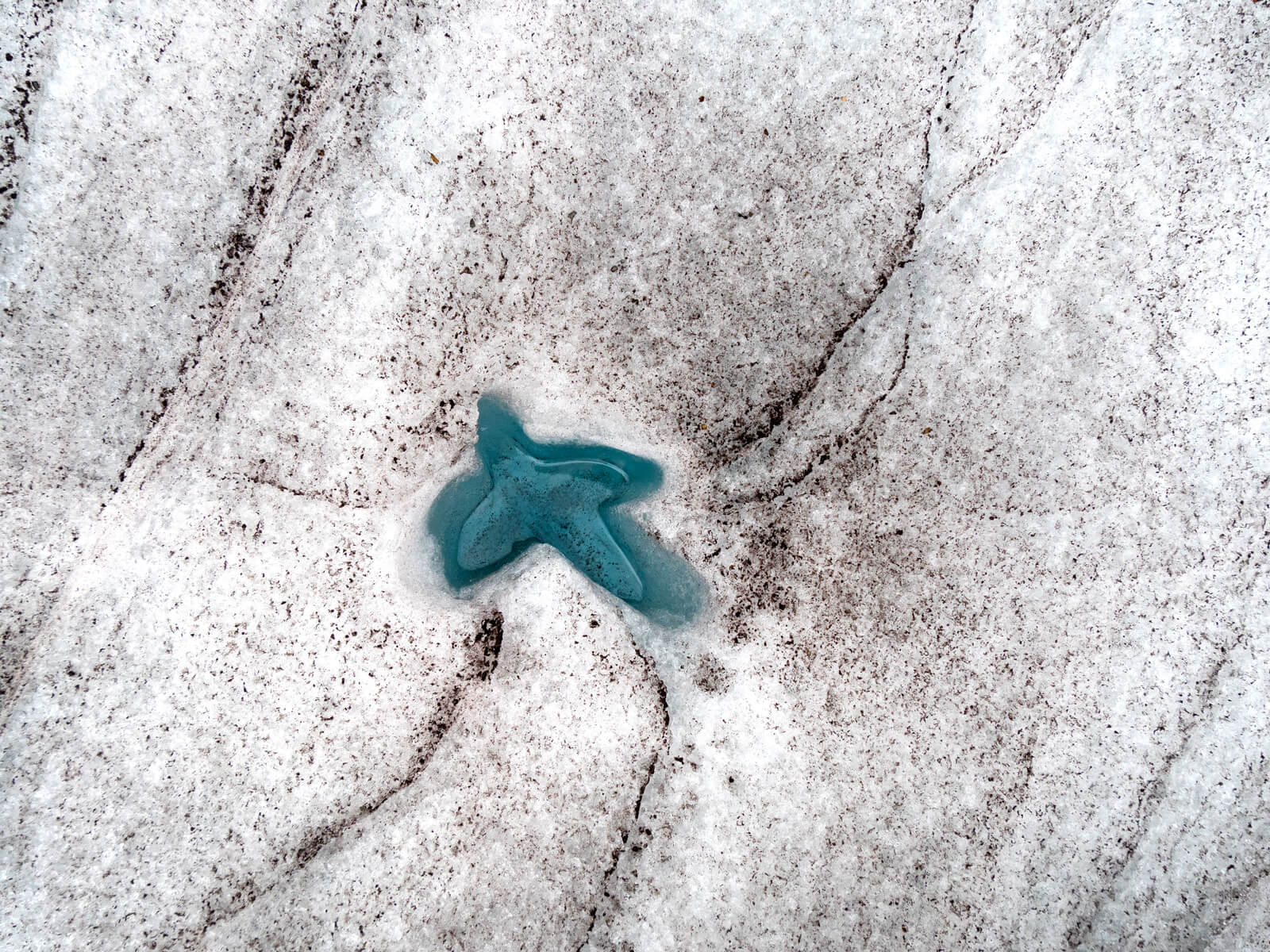
32 degrees Fahrenheit
One thing glaciologists will tell you, and something I have personally witnessed, is that glaciers are the best barometers for climate change. Where there used to be ice, there isn't ice anymore.
Consider that many glaciers had names dating back centuries, such as "eternal snow field" and "eternal ice," which imply permanence. The transformation we're seeing now is drastic.
Speaking with Dr. Matthias Huss, a glaciologist at the ETH Zurich and the head of Glacier Monitoring in Switzerland, I found that while changes in glacier length are the most obvious, the decrease in overall volume, specifically thickness, is the most concerning.
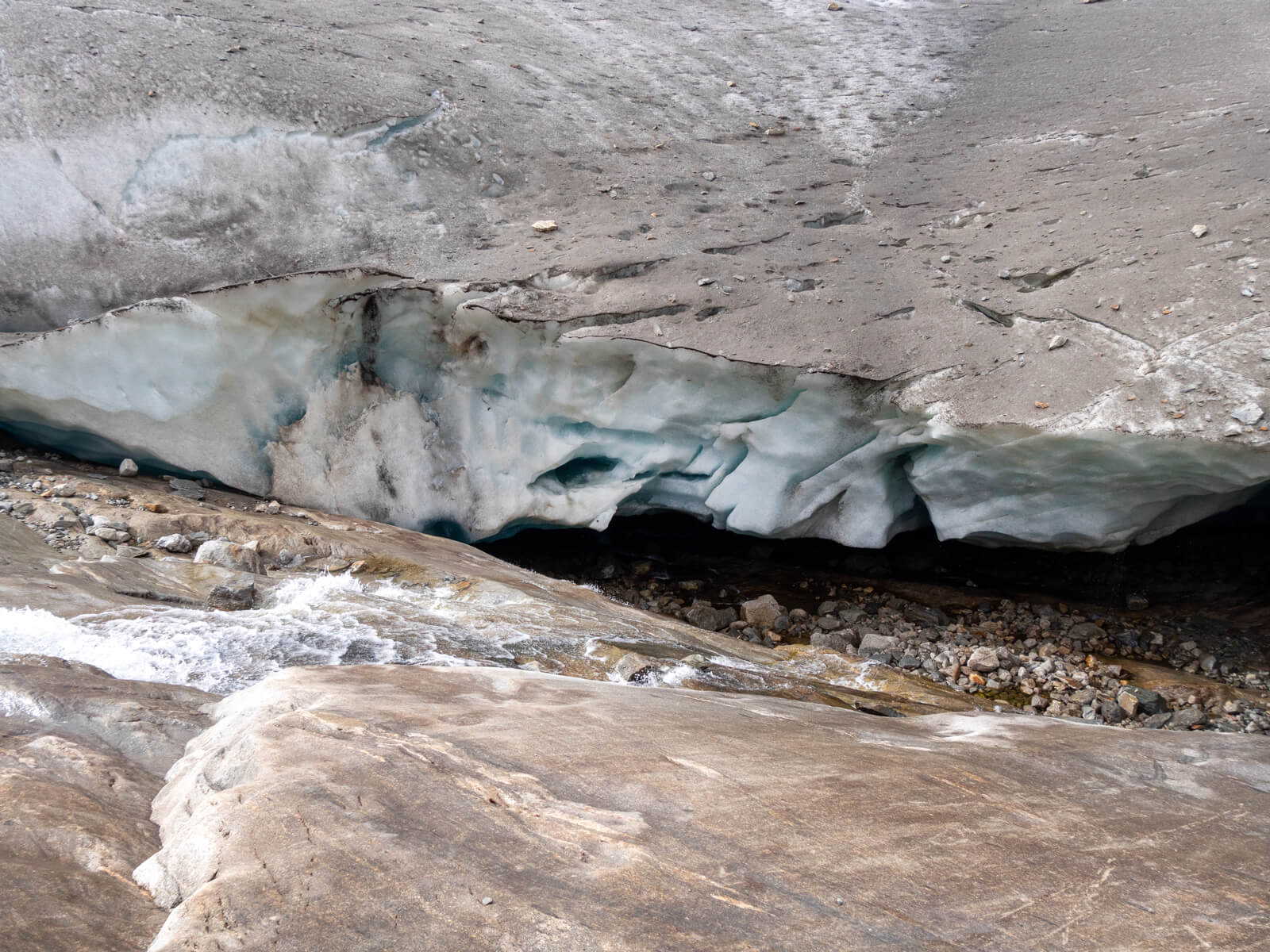
Most glaciers in the Alps are only 0º C (32º F). This indicates they are on the verge of melting and are extremely vulnerable to even little temperature rises. The smaller the volume, the faster they melt, resulting in a negative feedback loop.
Furthermore, whereas the world as a whole may still be experiencing warming of less than 2º C, the mountains have already experienced a rise of roughly 5º C. Ice functions as a cooling method by reflecting sunlight. Stone absorbs heat, especially when it is bare.
During the 2022 heatwave, the freezing point in the Alps surpassed 5000 meters. That is higher than the highest peak, Mt. Blanc. As a result, even ice that was much below freezing warmed up to the critical 0º C temperature.
The view from the Great Aletsch Glacier
I went on an expedition to the Aletsch Glacier with Dr Martin Hölzle of the University of Fribourg. Our guide pointed out a large stone on the edge of a drop-off as we neared the glacier from Gletscherstube, a spot I was familiar with from the Swiss Alps 100 race.
"Earlier this spring, we would put our crampons on here and walk right onto the glacier," he said. When I looked up, the glacier was some six meters below us.
The phrase "moving at a glacial pace" refers to something that travels incredibly slowly. It moves so slowly that we don't even notice it. But losing six meters of ice thickness in one summer is noticeable and irrevocable.
Swiss glaciers lost six percent of their volume in the summer of 2022.
In 2023, glaciers continued to melt. Another four percent of glacier volume was destroyed. In just two years, as much ice was being lost as in the entire period from 1960 to 1990.
As Dr. Hölzle showed on graphs of forecasts with uncertainty built in, those six percent beat even the wildest expectations.
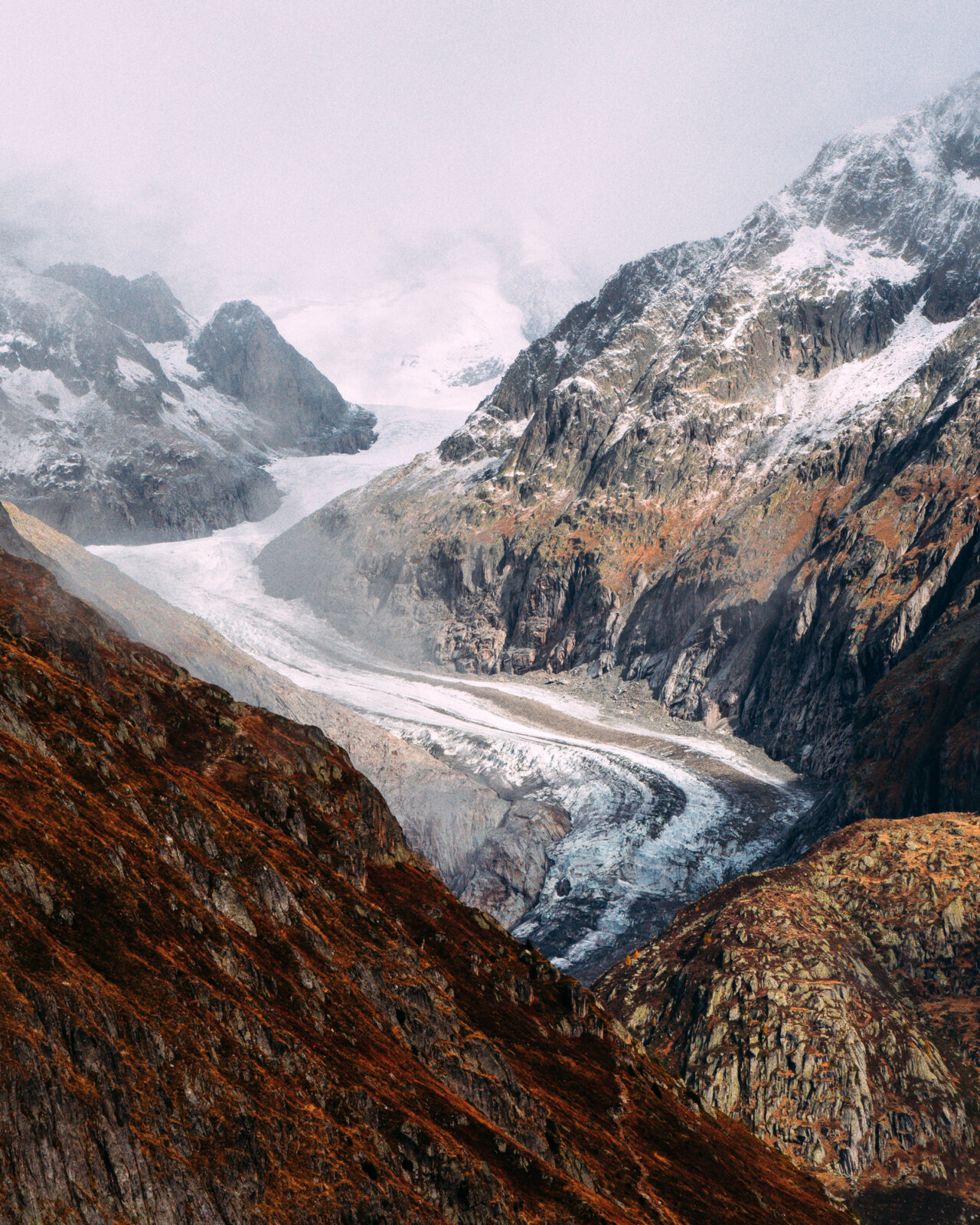
Europe's Disappearing Water Tower
What does the loss of our glaciers mean for us in Switzerland, Europe, and the rest of the world? Or, to put it another way, what do melting glaciers have to do with the price of food?
Switzerland has been known as Europe's reservoir (Wasserschloss) for a long time. Its glaciers feed the Rhône, Rhine, Danube, and Po rivers via the Inn and Ticino. These four of Europe's most significant rivers provide irrigation water to lush agricultural areas in France, Germany, Austria, Italy, and beyond.
Glaciers function as natural water regulators. But when glaciers melt, the water in these rivers becomes less regulated. That means more water when it rains and less when it doesn't.
This is the inverse of our demands, as we observe more water flowing in the winter when we don't need it for agriculture and less in the summer when we do. This loss of water leads to fewer crops and drives up prices.
But even before glacier water flows into these rivers, summer melt provides a supply of water in the mountains, particularly in the Alps, and is frequently the primary source of water for farms and alpine cabins. Farmers cannot keep their cattle on high meadows if this water disappears.
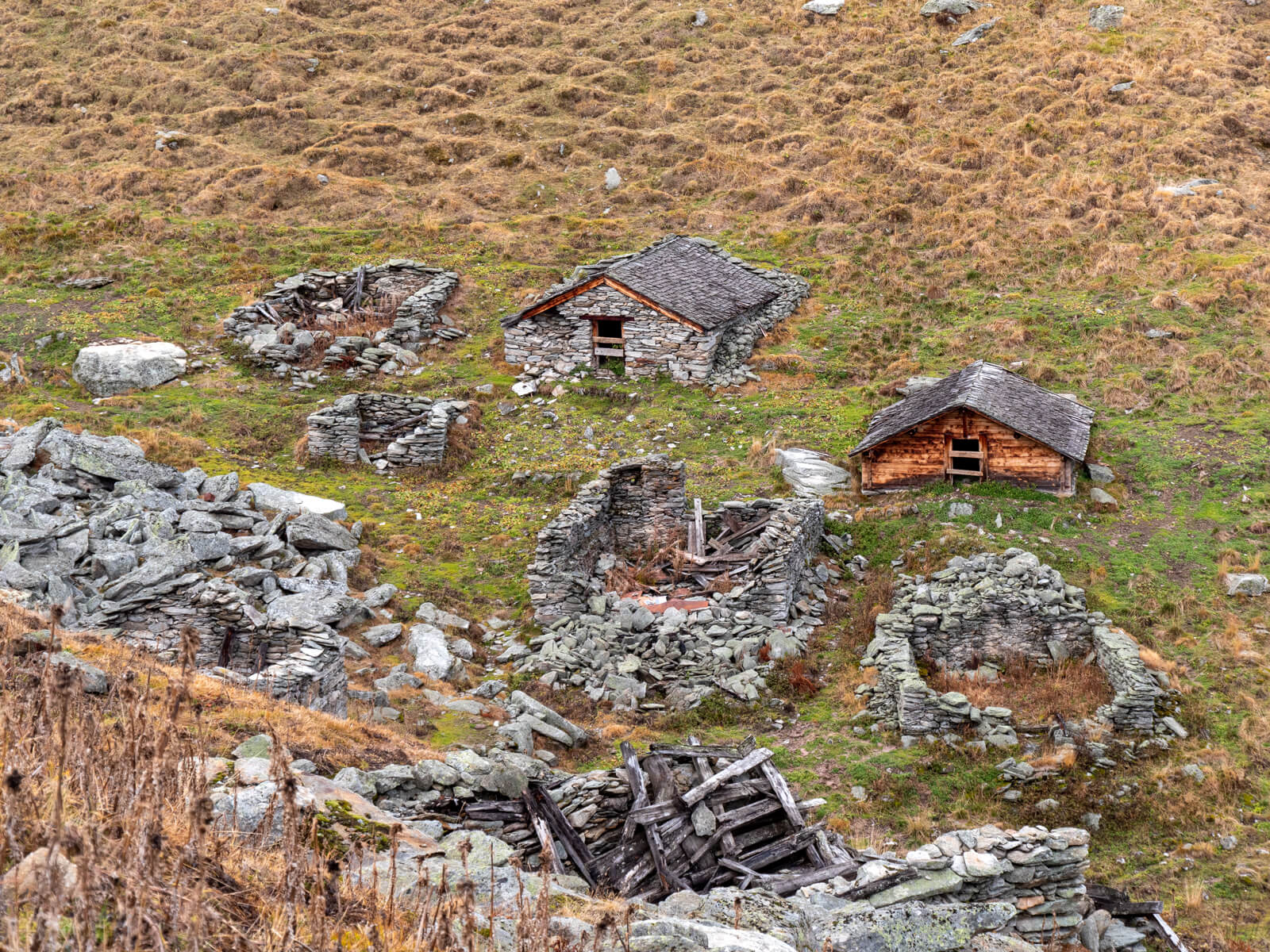
About the summer of 2022
This summer's drought followed an unusually warm winter with little snowfall in the mountains. Because of the lack of melting snow and rain, Alpine pastures were parched, and water reserves were left unreplenished. This caused farmers to bring their cattle down early and butcher them because they lacked the feed and space to keep them.
As a result of the market being suddenly saturated, the price of beef dropped. However, the price will rise long-term as vital inputs such as water, feed, and space grow more expensive.
Because glaciers are made up of an accumulation and ablation zone, a lack of winter snowfall adds to their demise. When no snow is in the accumulation zone (the top of the glacier), the glacier's balance of build-up and loss goes out of sync, and the glacier disappears.
Switzerland's changing landscape
I asked Dr. Matthias Huss what we could do about disrupting the hydrological cycle. Couldn't we simply build more dams and transform the glacier valleys into lakes?
His response was yes and no. Creating mountain reservoir lakes is not ideal in many ways since it introduces additional complications, such as changing the landscape and increasing evaporation.
Furthermore, as the glaciers melt, the underlying permafrost melts. This melting causes mountains to become unstable, resulting in landslides. A landslide into a reservoir could cause massive waves damaging or potentially breaching the dam and flooding the valley below.
Glacial lakes, which form naturally at the terminus of glaciers, pose many of the same problems for those living downstream. As we've seen in Pakistan and Peru, flash floods are a constant possibility due to rockslides, large glacier chunks breaking off, or strong rains.
Aside from the concerns that the loss of our glaciers poses, the environment and landscape are changing. Some places may become greener as temperatures warm, and the land becomes fertile for forests, shrubs, and grasses. Other areas may dry up and become even more.
For Switzerland, where glaciers like the Aletsch, Gorner, and Morteratsch are iconic, the loss of these icy giants will be a cultural loss that will also harm tourism and Swiss identity, as our geography shapes who we are and our self-perception.
We must establish a new concord between civilization and nature.
If we are to rescue what we can from the glaciers, we must cooperate as a society to uphold the Paris Climate Agreement goal of keeping global warming below 2° C, emphasizing 1.5° C.
We must substantially limit the use of fossil fuels and discover ways to sequester the carbon already in the atmosphere if we are to meet our targets. Even if those temperature goals are met, the Aletsch will still shrink by half and retreat to the Konkordiaplatz.
After years of pandemic and now a war in Europe, climate change might not be top of mind for many of us. However, climate change is a leading cause of social unrest, political conflict, and forced migration. Our glaciers are a barometer for the health of the world.
Right now, the world has a fever, and we need to get it under control if we are to escape without the gravest of damage.
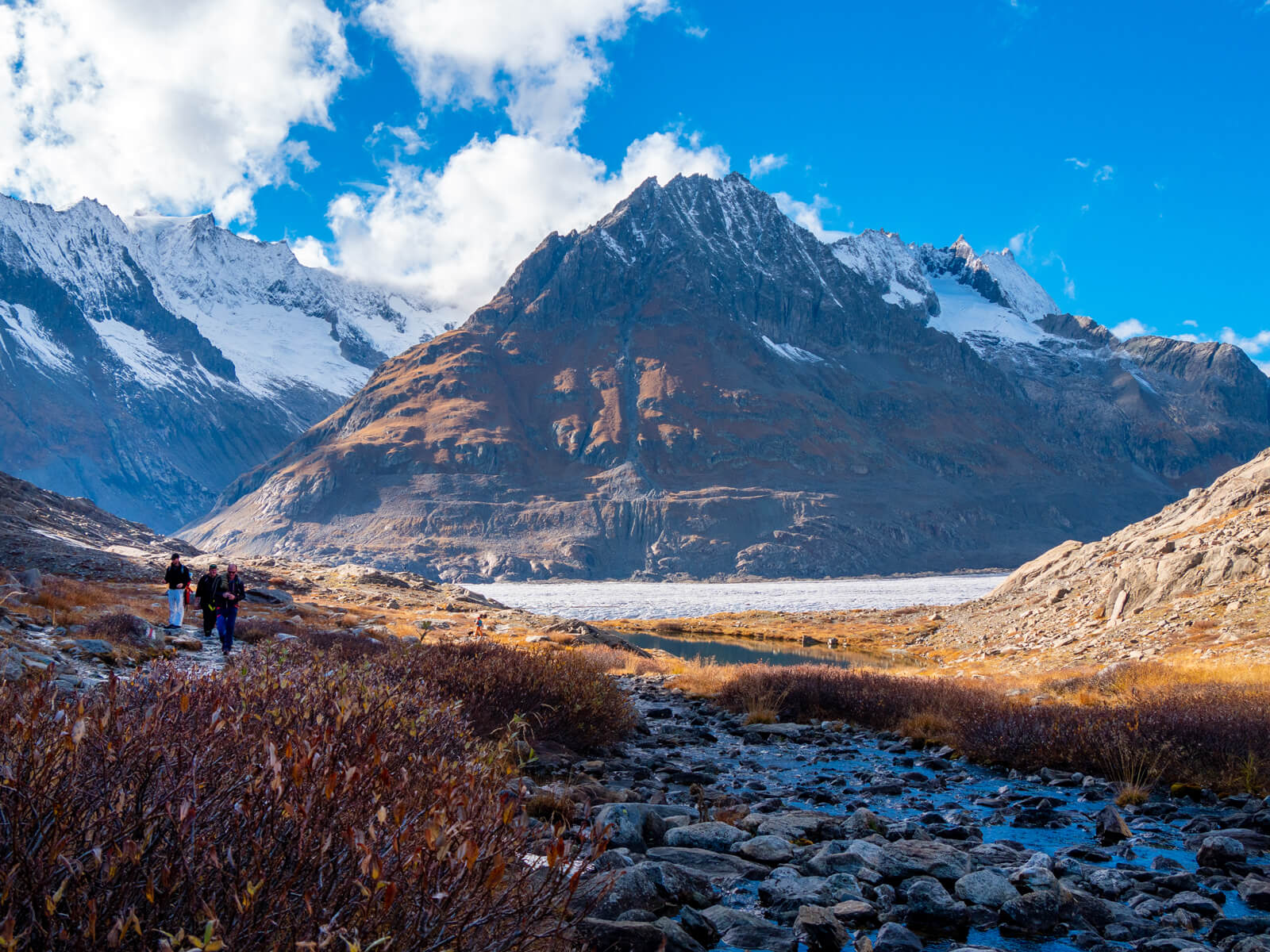
Source: Swiss Academy of Sciences

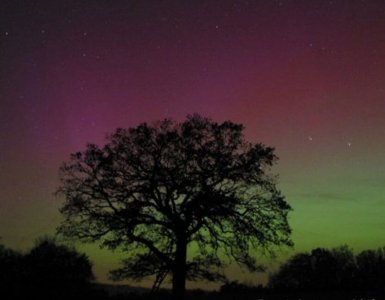
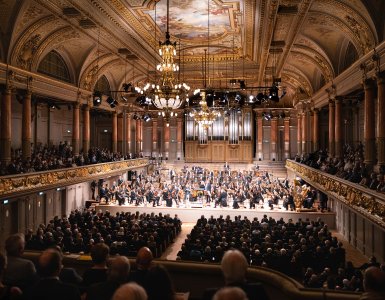

Add comment